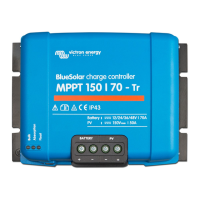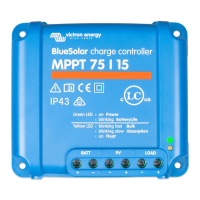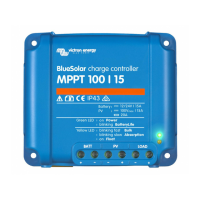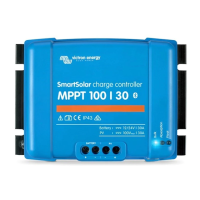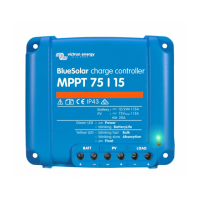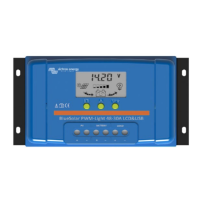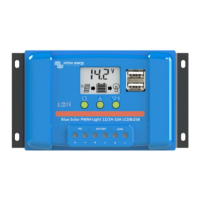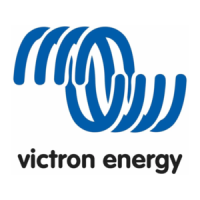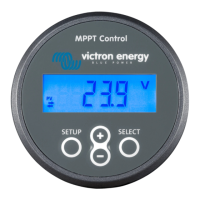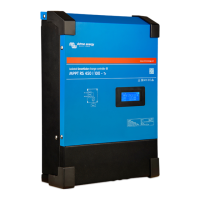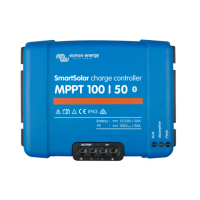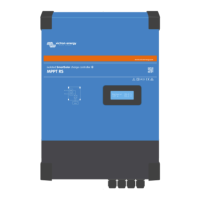Reverse battery polarity can potentially damage the solar charger, causing its internal fuse to blow for fail-safe protection. This
fuse might blow before the external fuse in the battery cable. However, please note that the internal fuse is situated in a
non-serviceable area, and it cannot be replaced or repaired. If this happens, the solar charger should be considered faulty.
The solar charger is not protected against reverse battery polarity, and any resulting damage is not covered under warranty.
8.5.4. Battery settings too low
If the solar charger's charge voltage and current are well below the manufacturer's recommended levels, the battery charging
process may become inadequate or excessively slow. Incorrect configuration can be a contributing factor, including:
• Setting the "Battery voltage" parameter too low.
• Setting the ''Absorption voltage" and "Float voltage" parameters too low.
• Setting the "Max charge current" parameter to zero or an excessively low value.
VictronConnect app, showing battery (system) voltage, charge current and charge voltages settings.
8.5.5. PV voltage too high
The PV voltage should always stay within the maximum rated limit of the solar charger, as indicated in its product name, type
plate and Technical specifications [59]. The solar charger can sustain damage based on the extent of the PV voltage height, and
it's important to note that such damage is not covered by warranty.
Should the PV voltage exceed the maximum rated PV voltage, the solar charger will cease charging, showing an overvoltage
error #33 with rapid blinking of the absorption and float LEDs. Charging resumes only when the PV voltage drops 5V below the
rated maximum voltage.
During investigations into high voltage issues, it's essential to review the VictronConnect app, solar charger display, or GX device
history. Check for the highest PV voltage recorded each day (Vmax) and past overvoltage warnings.
To avoid issues, check the open circuit voltage (Voc) rating of the PV array and ensure it is lower than the solar charger's
maximum rated voltage. Use the MPPT sizing calculator on the solar charger product page. For PV arrays in cold climates or with
night temperatures nearing or below 10°C, it's essential to consider possible increased output (more than its rated Voc). As a rule
of thumb, maintain an additional 10% safety margin.
MPPT solar charger manual
Page 46 Troubleshooting
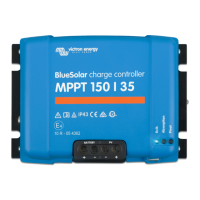
